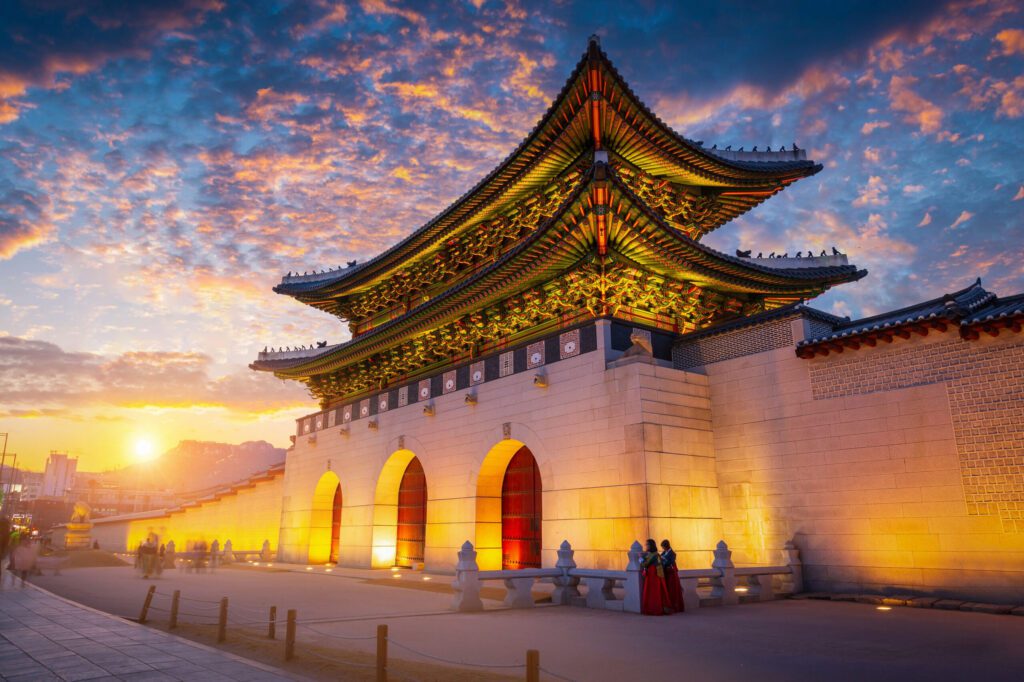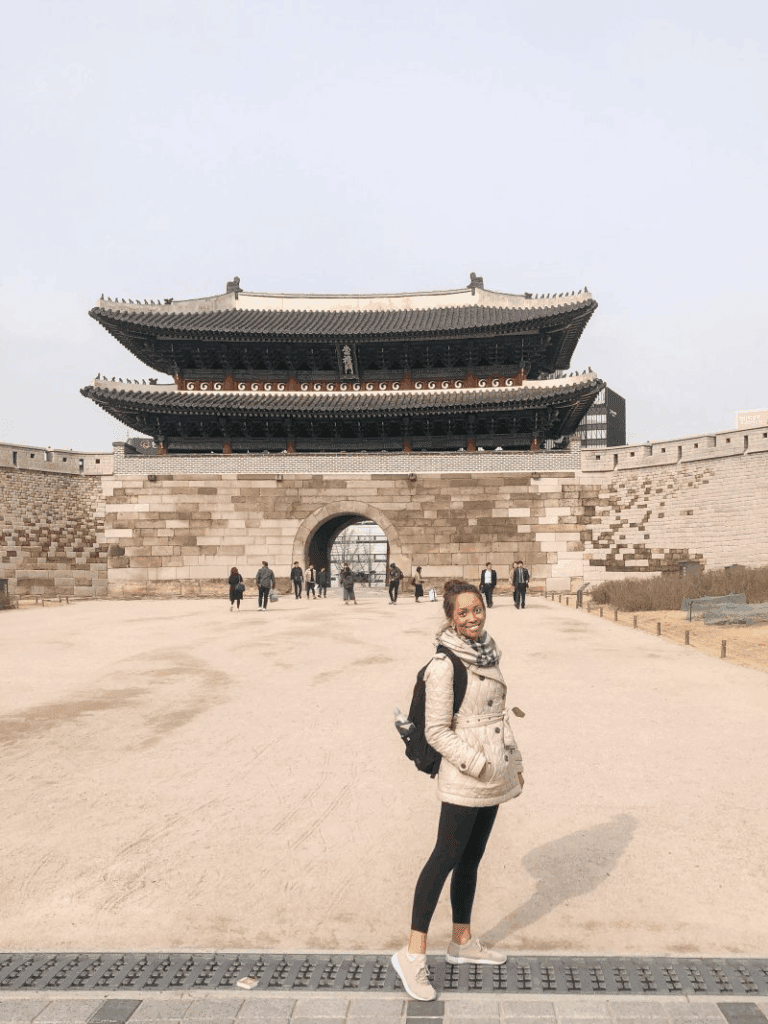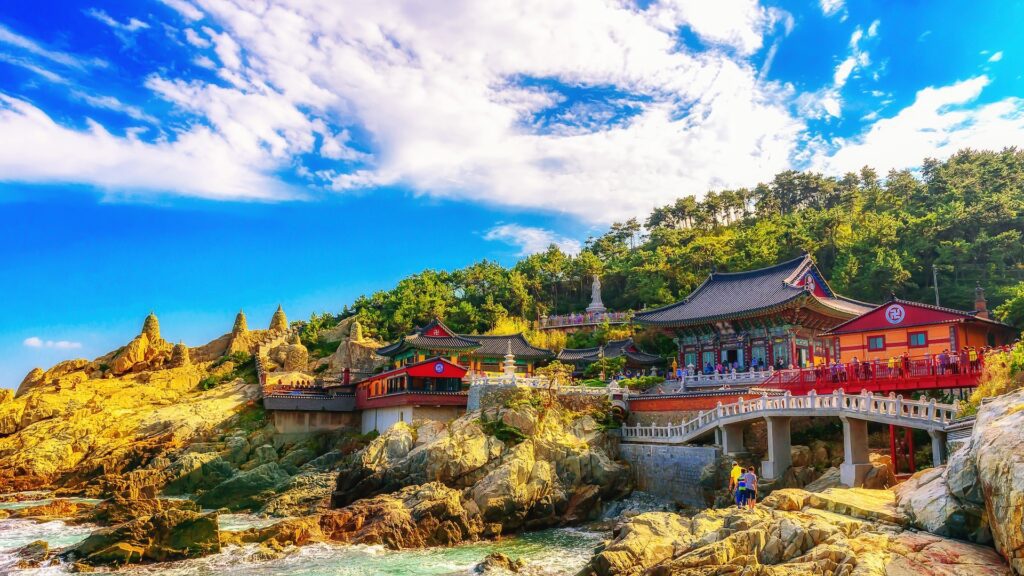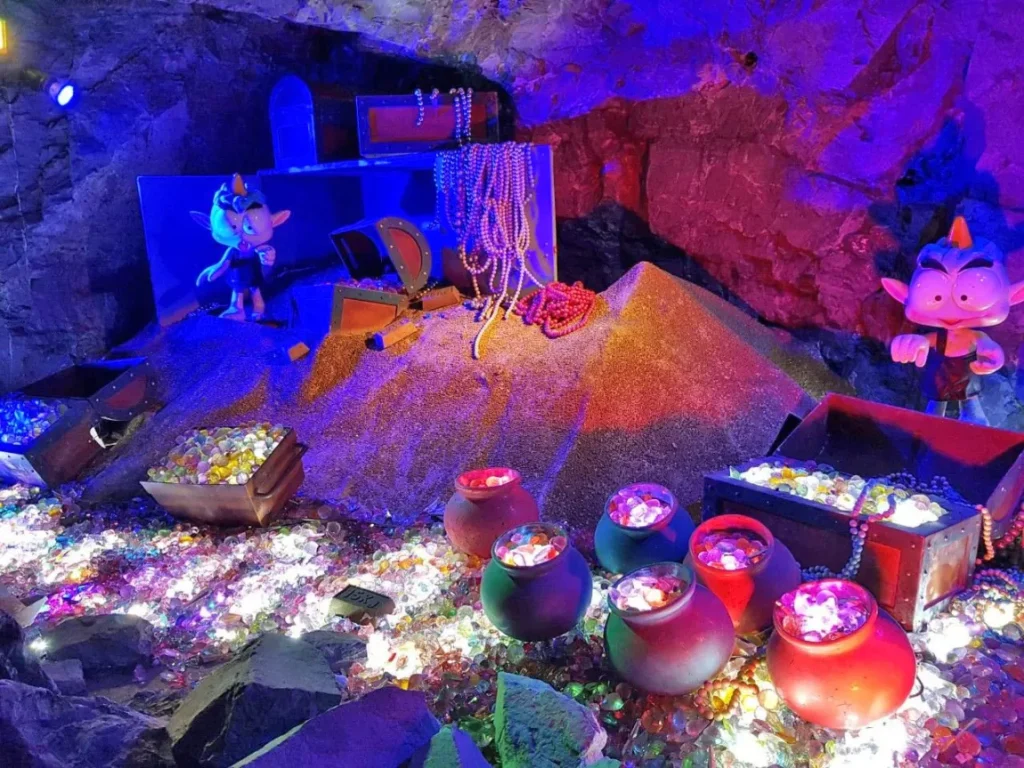South Korea
The Republic of South Korea is essentially half of the Korean Peninsula in Asia, bordering its communist rival, North Korea, to the north. South Korea lies between two major powers: China to the west and Japan to the east.
Throughout history, it has been influenced by both nations’ expansionist ambitions while striving to preserve its own culture and beliefs.
The capital, Seoul, embodies modernity, boasting skyscrapers, luxurious malls, and expansive parks. At the same time, the city is home to many reminders of its past, including temples and historic buildings.
As any South Korea Travel Guide will note, South Koreans are passionate nature lovers, and you will often see them energetically exploring outside the cities—on foot, by car, or by bike—in one of the country’s national parks, remote beaches, hot springs, or even ski resorts.
Korea is rapidly becoming one of the most intriguing new destinations in Asia. Lametayel and the Embassy of Korea in Israel are proud to present the special feature “The Next Big Thing: Korea!” — step inside, get a taste of what Korea has to offer, and discover your next travel destination.
This feature is a great starting point for anyone planning a trip to South Korea and looking for a South Korea Travel Guide.
Frequently Asked Questions about South Korea
Spring (March–May) and autumn (September–November) are ideal for pleasant weather and beautiful scenery like cherry blossoms or colorful foliage.
Citizens of many countries can enter visa-free for short stays, usually up to 90 days. Always check the latest entry requirements before traveling.
The KTX high-speed train is perfect for traveling between cities, while the subway system in Seoul and other major cities is efficient and affordable.
Definitely. While South Korea has outstanding healthcare, visitors without insurance can face high upfront costs. A good policy covers medical emergencies, lost items, and trip cancellations — all common issues for international travelers.
Find trusted, customizable plans through VisitorsCoverage before your flight to Seoul.
Yes. South Korea is considered very safe, with low crime rates and a well-organized public transport system.
Yes. South Korea is considered very safe, with low crime rates and a well-organized public transport system.
In South Korea, major carriers like KT, SK Telecom, and LG U+ provide great network coverage for travelers. SIM cards can be purchased at Incheon Airport or city kiosks, but buying online before your trip saves time and often gives you a better deal. You can pick it up upon arrival or have it shipped to your home before departure.
Order your South Korea SIM card here for seamless connectivity>>
Public transportation in South Korea is efficient, but after a long flight, a private transfer with KiwiTaxi is the most relaxing choice. Your driver will meet you at the terminal, help with luggage, and take you directly to your hotel in Seoul, Busan, or Jeju — all for a fixed, transparent price.
South Korea - The Short Guide
Weather in South Korea
The weather in South Korea varies significantly with the seasons, offering a very different experience depending on when you visit. There are four distinct seasons:
The spring, from March to May, is known for mild temperatures and spectacular cherry blossoms, with an average of around 15–20°C (59–68°F).
The summer, from June to August, is hot and humid with temperatures often reaching 30°C (86°F) or higher, and includes the monsoon period with heavy rainfall.
The autumn, from September to November, offers crisp air, comfortable temperatures averaging 10–20°C (50–68°F), and stunning autumn foliage.
The winter, from December to February, is cold and dry, with temperatures often dropping below 0°C (32°F) and occasional snow, especially in the mountains, making it ideal for skiing.
Here you can see the weather by month >
South Korea Travel Guide – Flights to South Korea
Incheon International Airport, located just outside of Seoul, is one of the busiest and most advanced airports in the world, handling tens of millions of passengers annually.
It serves as the main gateway to South Korea, offering a wide range of international connections and domestic flights to popular destinations such as Jeju Island, Busan, and Daegu.
Find the best flights to South Korea with Kiwi.com — compare routes, prices, and airlines easily>>
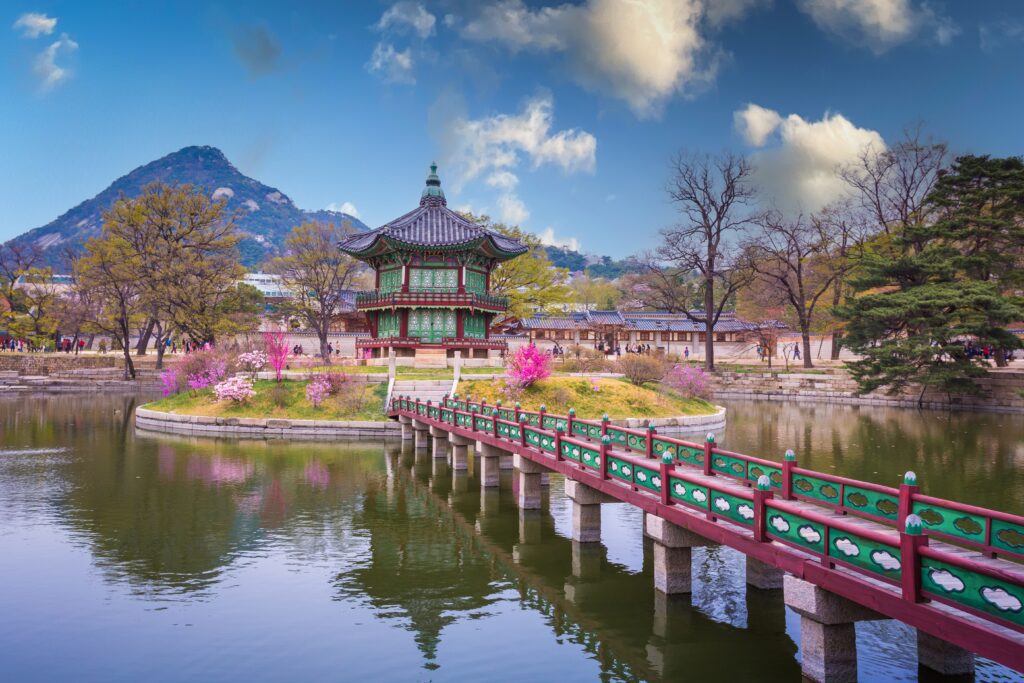
South Korea Travel Guide – What to Do in South Korea
The variety of options and activities in South Korea is awe-inspiring, attracting every type of traveler—from families with kids to solo adventurers.
Nature enthusiasts will be captivated by the country’s breathtaking national parks, such as Seoraksan and Jirisan, perfect for hiking and exploring mountain landscapes. For a more cultural experience, you can visit traditional hanok villages in Jeonju, discover ancient palaces and temples in Seoul and Gyeongju, or enjoy Korea’s unique festivals throughout the year.
The southern city of Busan boasts sandy beaches and a relaxed coastal atmosphere, while Jeju Island is renowned for its volcanic landscapes, waterfalls, and natural wonders that seem like another world.
In Seoul, you’ll find an endless mix of history and modernity—grand palaces, cutting-edge skyscrapers, bustling shopping districts like Myeongdong, and vibrant nightlife that never sleeps.
What to Do in South Korea with Kids
South Korea is a fantastic destination for families traveling with children. The country offers a plethora of family-friendly attractions, ranging from outdoor adventures in the mountains to exciting urban experiences.
In Seoul, families shouldn’t miss Lotte World, one of the largest indoor theme parks in the world, complete with rides, an ice-skating rink, and a folk museum. Another highlight is the COEX Aquarium, where kids can explore marine life up close.
If you’re heading to Busan, families will enjoy Haeundae Beach, which is perfect for swimming, sand play, and even small amusement parks along the boardwalk. On Jeju Island, children can discover lava tube caves, visit teddy bear museums, and have fun at unique theme parks like Hello Kitty Island.
For a mix of learning and fun, visit the National Museum of Korea in Seoul, which features interactive exhibitions specifically designed for younger audiences.
With its balance of modern attractions, cultural experiences, and natural wonders, South Korea is an unforgettable destination for families.
Discover South Korea with Viator — from K-pop Seoul to ancient palaces, great tours await>>
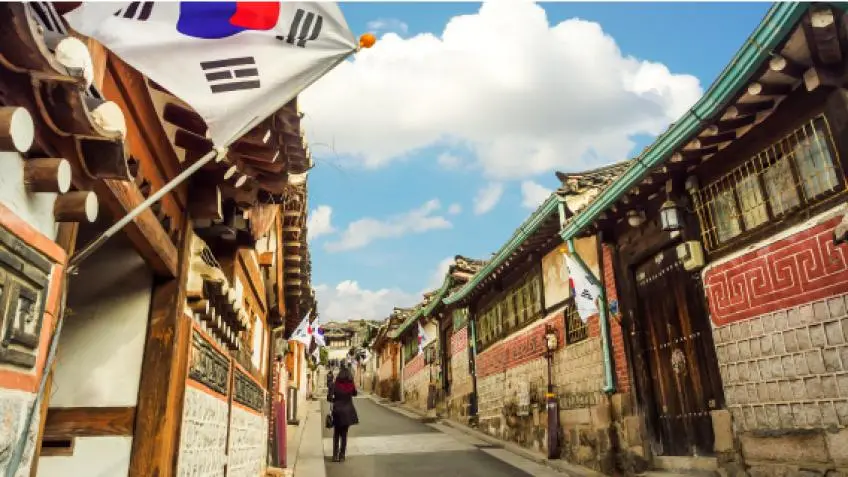
Smooth Airport Transfers Across South Korea
Public transportation in South Korea is efficient, but after a long flight, a private transfer with KiwiTaxi is the most relaxing choice. Your driver will meet you at the terminal, help with luggage, and take you directly to your hotel in Seoul, Busan, or Jeju — all for a fixed, transparent price.
South Korea Travel Guide – Recommended Itinerary in South Korea
One of the best ways to explore South Korea is by following a pre-arranged travel itinerary that combines the traditional landscapes and villages of the south, the cultural richness and modern energy of Seoul in the center, and the coastal beauty of Busan and Jeju Island.
You can book such itineraries in advance from home or through the many travel agencies found in Seoul and other major cities. It is recommended to include destinations such as Seoul, Gyeongju (the “museum without walls”), Busan with its famous beaches, and Jeju Island with its volcanic landscapes and waterfalls. End your journey back in Seoul for some last-minute shopping and cultural experiences.
Here you can read about the perfect 10-day itinerary in South Korea >

South Korea Travel Guide – Where to Stay in South Korea
South Korea provides a broad variety of accommodation options, ranging from luxury hotels and modern resorts to budget-friendly guesthouses and hostels that cater to backpackers.
In major cities like Seoul and Busan, most hotels are clustered around popular tourist districts, offering choices for every budget. Travelers who want to experience the vibrant nightlife often prefer staying in central areas such as Hongdae or Gangnam in Seoul, where the action never stops.
Families and visitors seeking a quieter atmosphere usually opt for accommodations outside the bustling centers, where they can enjoy more space, serene surroundings, and often a higher level of personalized hospitality.
SIM card for South Korea
In South Korea, major carriers like KT, SK Telecom, and LG U+ provide great network coverage for travelers. SIM cards can be purchased at Incheon Airport or city kiosks, but buying online before your trip saves time and often gives you a better deal. You can pick it up upon arrival or have it shipped to your home before departure.
Order your South Korea SIM card here for seamless connectivity>>
South Korea Travel Guide – Northern South Korea
Northern South Korea, with its diverse landscapes and unique cultural heritage, offers a very different experience compared to the country’s southern coastal regions. This area has become increasingly popular in recent years due to its wide range of activities and attractions.
Visitors can hike through scenic national parks such as Seoraksan, explore mountain temples surrounded by nature, enjoy rafting and outdoor adventures along the rivers, and discover traditional villages that preserve Korea’s rich history and customs.
The largest city in the north is Seoul, which serves as the cultural and economic capital, and the perfect starting point for excursions to nearby mountains, historic sites, and vibrant markets.
Jeonju, South Korea
Jeonju was once a quiet provincial city but has grown into a beloved destination for travelers seeking a taste of traditional Korean culture. Visitors can stroll through the famous Hanok Village, where hundreds of traditional houses are preserved, sample Korea’s most famous dish, bibimbap, at its birthplace, and explore craft shops, teahouses, and cultural performances. The city is especially lively during the Jeonju International Film Festival.
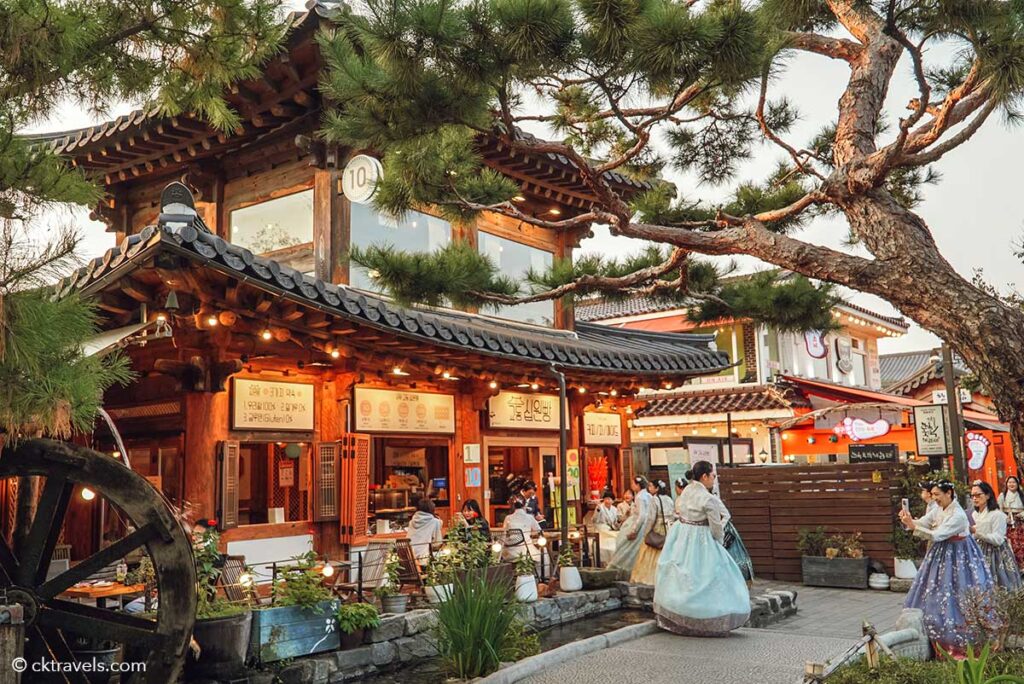
Gyeongju, South Korea
Known as the “museum without walls,” Gyeongju offers visitors a chance to step back in time. Once the capital of the ancient Silla Kingdom, the city is filled with historic temples, royal tombs, and artifacts.
Popular attractions include Bulguksa Temple, Seokguram Grotto, and Tumuli Park. At night, the Anapji Pond is beautifully illuminated, providing a magical atmosphere for families and couples alike.
Busan, South Korea
Once mainly a port city, Busan has transformed into South Korea’s second-largest city and a major tourist hub. Travelers can enjoy Haeundae Beach, Jagalchi Fish Market, and colorful Gamcheon Culture Village. It’s also known for the Busan International Film Festival and hot springs. Busan attracts both locals and foreigners, especially during summer months.
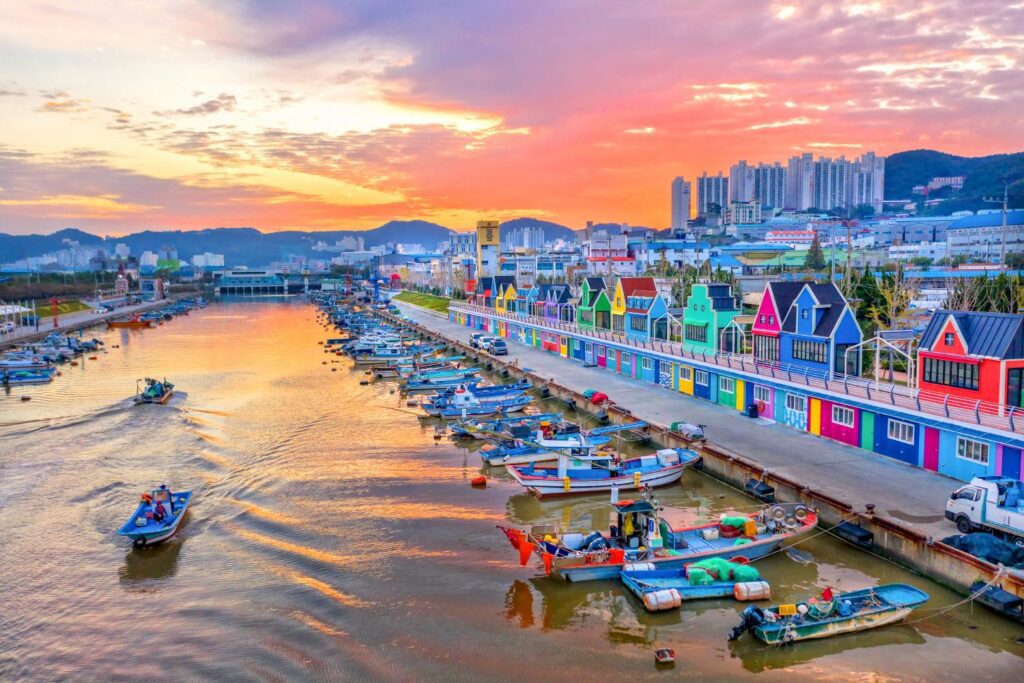
Andong, South Korea
Andong was traditionally considered the cultural heart of Korea, and today it draws travelers interested in history and heritage. The Hahoe Folk Village, a UNESCO World Heritage site, preserves traditional houses and Confucian culture. The annual Andong Mask Dance Festival is another highlight, where visitors can watch performances and take part in lively cultural events.
Sokcho, South Korea
Once a small fishing town, Sokcho has become the gateway to Seoraksan National Park, one of Korea’s most famous hiking destinations. Travelers can enjoy mountain trails, cable car rides, and hot springs, while still being close to Sokcho’s beaches and seafood markets. The town is especially popular in autumn, when the park’s foliage is at its most stunning.
Shopping in South Korea
South Korea is not only famous for its rich culture, high-tech cities, and delicious cuisine, but also for its incredible shopping scene! The country offers a wide variety of malls, shopping districts, and street markets, where you can buy trendy fashion, cosmetics, electronics, souvenirs, K-pop merchandise, and much more—often at very competitive prices.
In Seoul, you’ll find massive shopping complexes like COEX Mall and Lotte World Tower Mall, as well as unique markets such as Namdaemun, Dongdaemun, and the vibrant Myeongdong district, known as a paradise for fashion and beauty lovers.
In Busan, the Shinsegae Centum City Mall—listed as the largest shopping complex in the world—offers a mix of luxury and entertainment.
South Korea Travel Guide – Attractions in South Korea
South Korea is filled with attractions for all ages: from vibrant shopping districts, K-pop themed entertainment, and futuristic malls in Seoul, to historic palaces, world-class museums, and aquariums.
Families can enjoy Lotte World and Everland, two of Asia’s largest theme parks, while nature lovers will be drawn to the country’s stunning national parks, hot springs, and scenic coastlines. On Jeju Island, you’ll find volcanic landscapes, lava tubes, waterfalls, and unique theme museums.
In the mountains, you can hike trails of varying difficulty, explore temples hidden in the forest, or take thrilling cable car rides with panoramic views. And that’s just the beginning.

